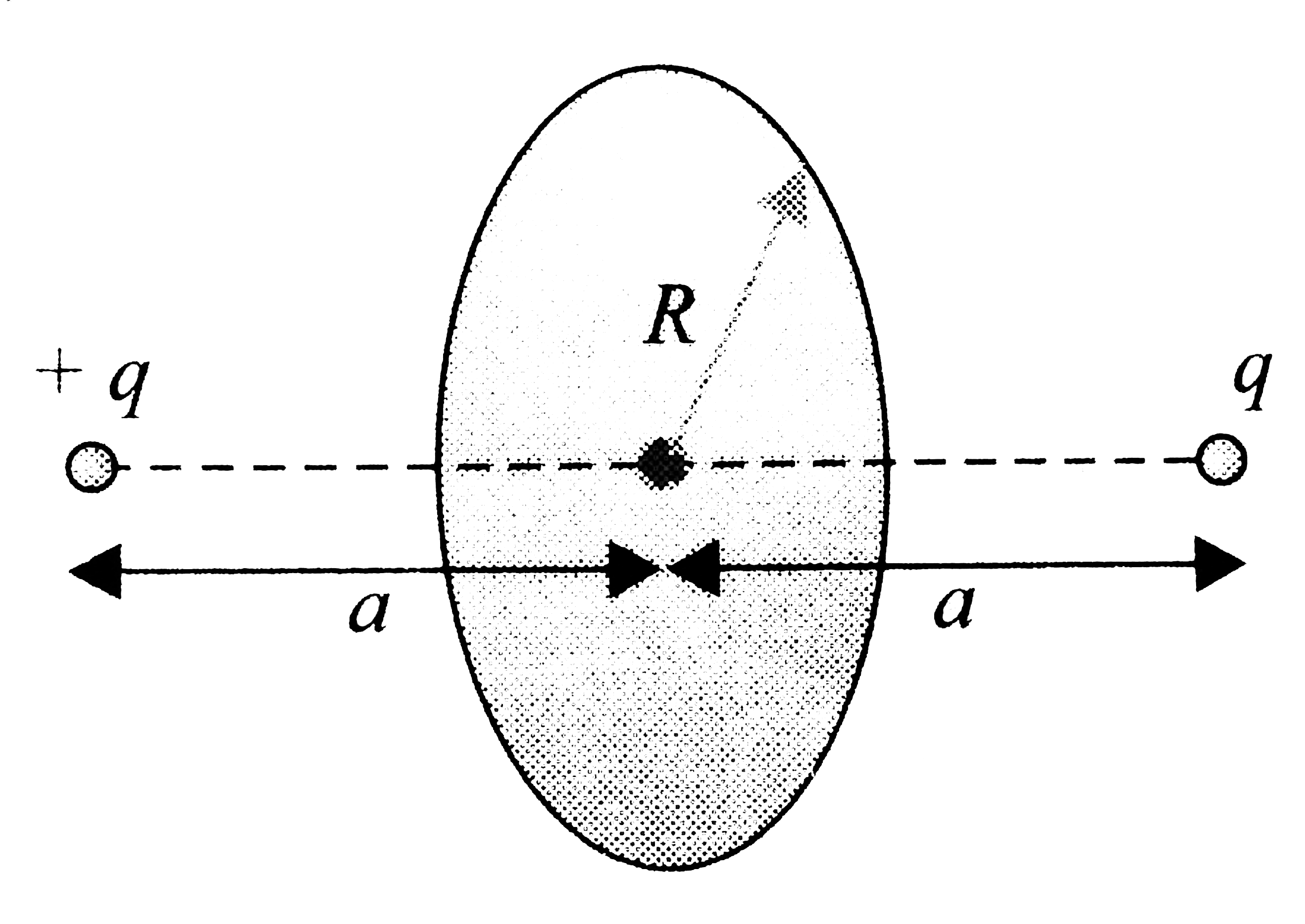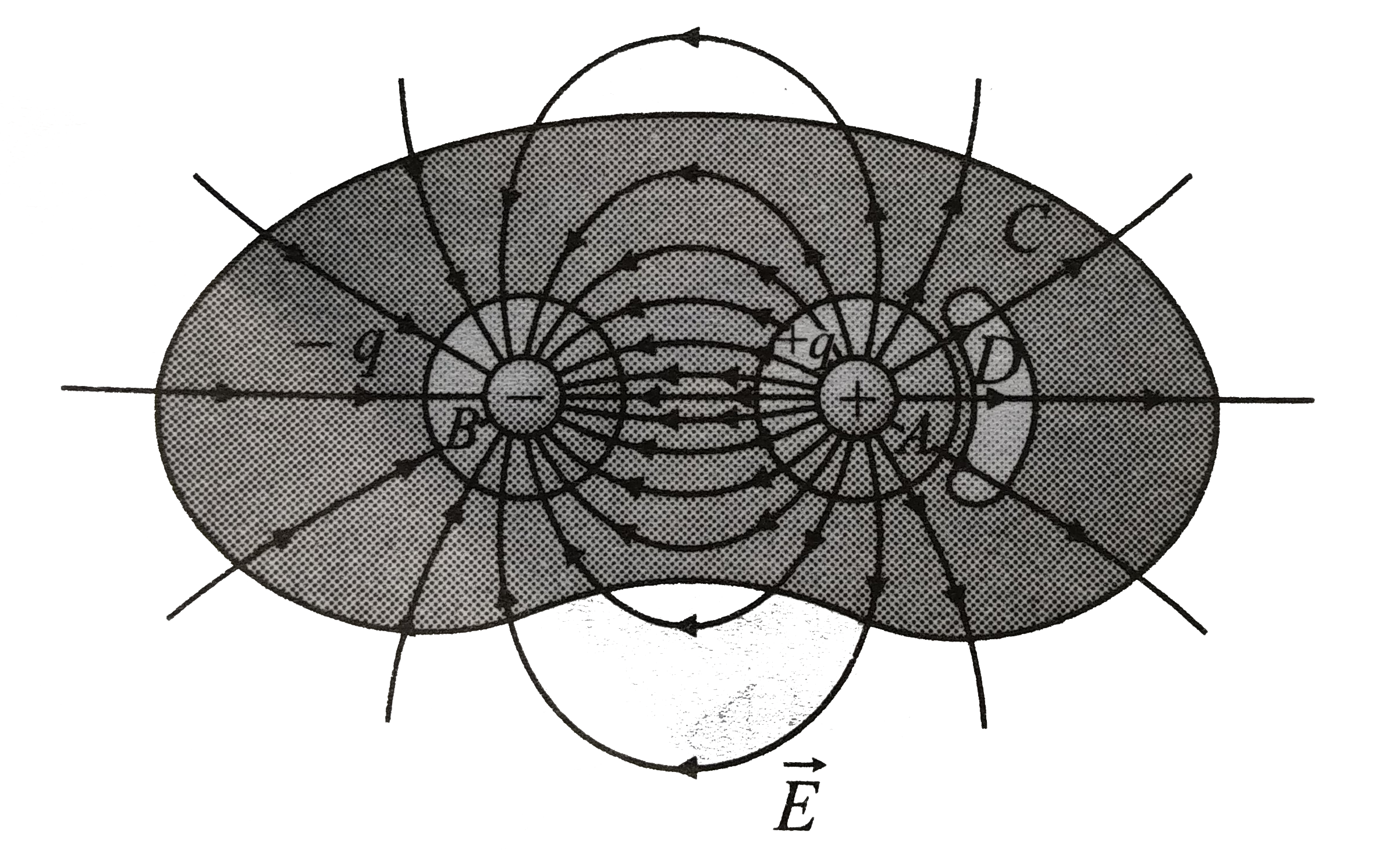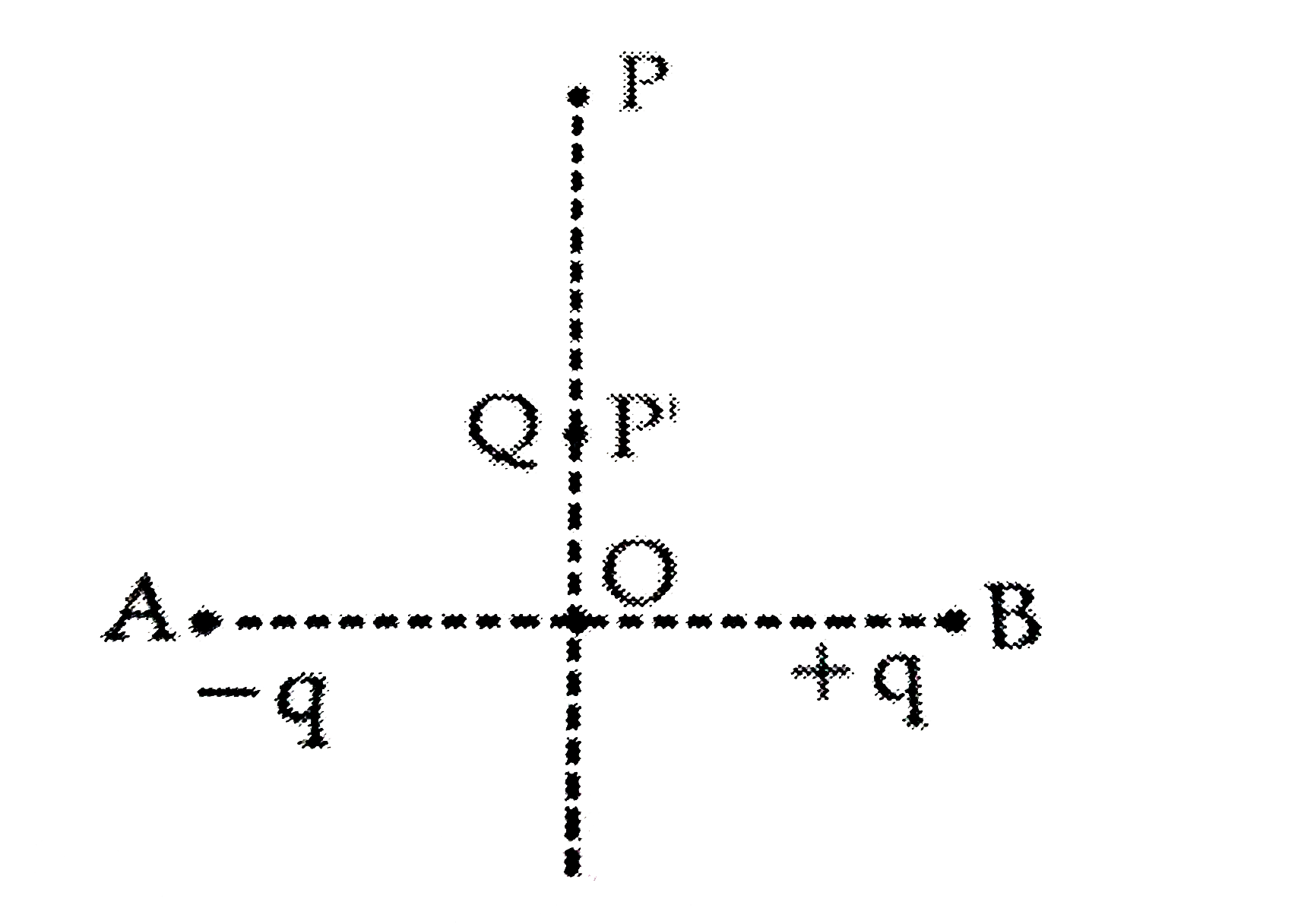Two point charges q and - q separated by a distance 2x constitute a electric dipole. Then, direction of the axis of this dipole is:
from positive charge to negative charge
perpendicular to the line joining the two charges drawn at the centre and pointing in upward direction
perpendicular to the line joining the two charges drawn at the centre and pointing in downward direction
from negative charge to positive charge
The correct Answer is:D
To solve the question regarding the direction of the axis of an electric dipole formed by two point charges q and −q separated by a distance 2x, we can follow these steps:
1. Understanding Electric Dipole:
An electric dipole consists of two equal and opposite charges separated by a certain distance. In this case, we have a positive charge q and a negative charge −q separated by a distance of 2x.
2. Identifying the Charges:
Let's denote the positive charge q located at point A and the negative charge −q located at point B. The distance between these two charges is 2x.
3. Defining the Dipole Moment:
The dipole moment →p is defined as:
→p=q⋅→d
where →d is the vector pointing from the negative charge to the positive charge. In this case, →d points from B to A.
4. Direction of the Dipole Moment:
According to the standard convention, the direction of the dipole moment is taken from the negative charge to the positive charge. Therefore, in our scenario, the direction of the dipole moment →p is from charge −q (point B) to charge q (point A).
5. Conclusion:
Since the dipole moment points from the negative charge to the positive charge, the direction of the axis of the dipole is from −q to q.
Final Answer:
The direction of the axis of the dipole is from the negative charge to the positive charge.
An electric dipole consists of two equal and opposite charges separated by a certain distance. In this case, we have a positive charge q and a negative charge −q separated by a distance of 2x.
Let's denote the positive charge q located at point A and the negative charge −q located at point B. The distance between these two charges is 2x.
The dipole moment →p is defined as:
→p=q⋅→d
where →d is the vector pointing from the negative charge to the positive charge. In this case, →d points from B to A.
According to the standard convention, the direction of the dipole moment is taken from the negative charge to the positive charge. Therefore, in our scenario, the direction of the dipole moment →p is from charge −q (point B) to charge q (point A).
Since the dipole moment points from the negative charge to the positive charge, the direction of the axis of the dipole is from −q to q.
The direction of the axis of the dipole is from the negative charge to the positive charge.
Similar Questions
Two point charges Q and -Q/4 are separated by a distance x.

View SolutionTwo equal charges q of opposite sign separated by a distance 2a constitute an electric dipole of dipole moment p. If P is a point at a distance r from the centre of the dipole and the line joining the centre of the dipole to this point makes an angle θ with the axis of the dipole, then then potential at P is given by (r>>2a) where (p = 2 qa)
View SolutionTwo point charges q and -q are separated by a distance 2a. Evaluate the flux of the electric field strength vector across a circle of radius R.

View SolutionTwo point charges +Q and -Q are separated by a certain distance. The resultant electric field is parallel to the line joining the charges at the points
View SolutionSet up arrangment of three point charges : q,+2qandxq separated by equal finite distances so that electric potential energy of the system is zero. What is x ?
View Solutionfigure shows the field produced by two point charges +q and -q of equal magnitude but opposite signs (an electric dipole). Find the electric flux through each of the closed surfaces A,B,C, and D.

View SolutionTwo point charges Q and -3Q are placed at some distance apart. If the electric field at the location of Q is →E, the field at the location of - 3Q is
View SolutionCharges −qand+q located at A and B, respectively, constitute an electric dipole. Distance AB = 2a, O is the mid point of the dipole and OP is perpendicular to AB. A charge Q is placed at P where OP = y and y>>2a. The charge Q experiences an electrostatic force F. If Q is now moved along the equatorial line to P' such that OP'=(y3), the force on Q will be close to (y3>>2a)

View SolutionTwo point charges +8q and −2q are located at x=0 and x=L respectively. The location of a point on the x axis at which the net electric field due to these two point charges is zero is
View SolutionTwo points charges +4q and +q are separated by distance r, where should a third point charge Q be placed that the whole system remains in equilibrium
View Solution
